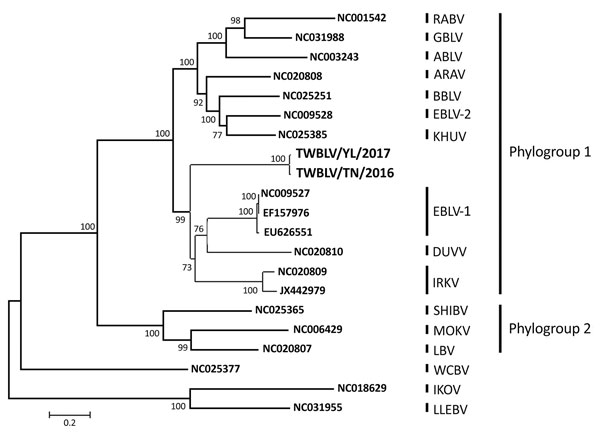Volume 24, Number 4—April 2018
Dispatch
Lyssavirus in Japanese Pipistrelle, Taiwan
Figure

Figure. Phylogenetic relationship of TWBLV (boldface), a putative new lyssavirus found in 2 Japanese pipistrelles (Pipistrellus abramus) in Taiwan in 2016 and 2017, compared with other lyssaviruses. Using the concatenated coding genes, we constructed the phylogenetic tree by using the maximum-likelihood method with the general time reversible plus invariant sites plus gamma 4 model. Numbers at the nodes indicate bootstrap confidence values (1,000 replicates) for the groups being composed of virus genes at the right of the nodes. GenBank accession numbers are provided for reference viruses. Scale bar indicates nucleotide substitutions per site. ABLV, Australia bat lyssavirus; ARAV, Aravan lyssavirus; BBLV, Bokeloh bat lyssavirus; DUVV, Duvenhage lyssavirus; EBLV-1, European bat lyssavirus type 1; EBLV-2, European bat lyssavirus type 2; IKOV, Ikoma lyssavirus; IRKV, Irkut lyssavirus; KHUV, Khujand lyssavirus; LBV, Lagos bat lyssavirus; LLEBV, Lleida bat lyssavirus; MOKV, Mokola lyssavirus; SHIBV, Shimoni bat lyssavirus; RABV, rabies lyssavirus; TWBLV, Taiwan bat lyssavirus; WCBV, West Caucasian bat lyssavirus.